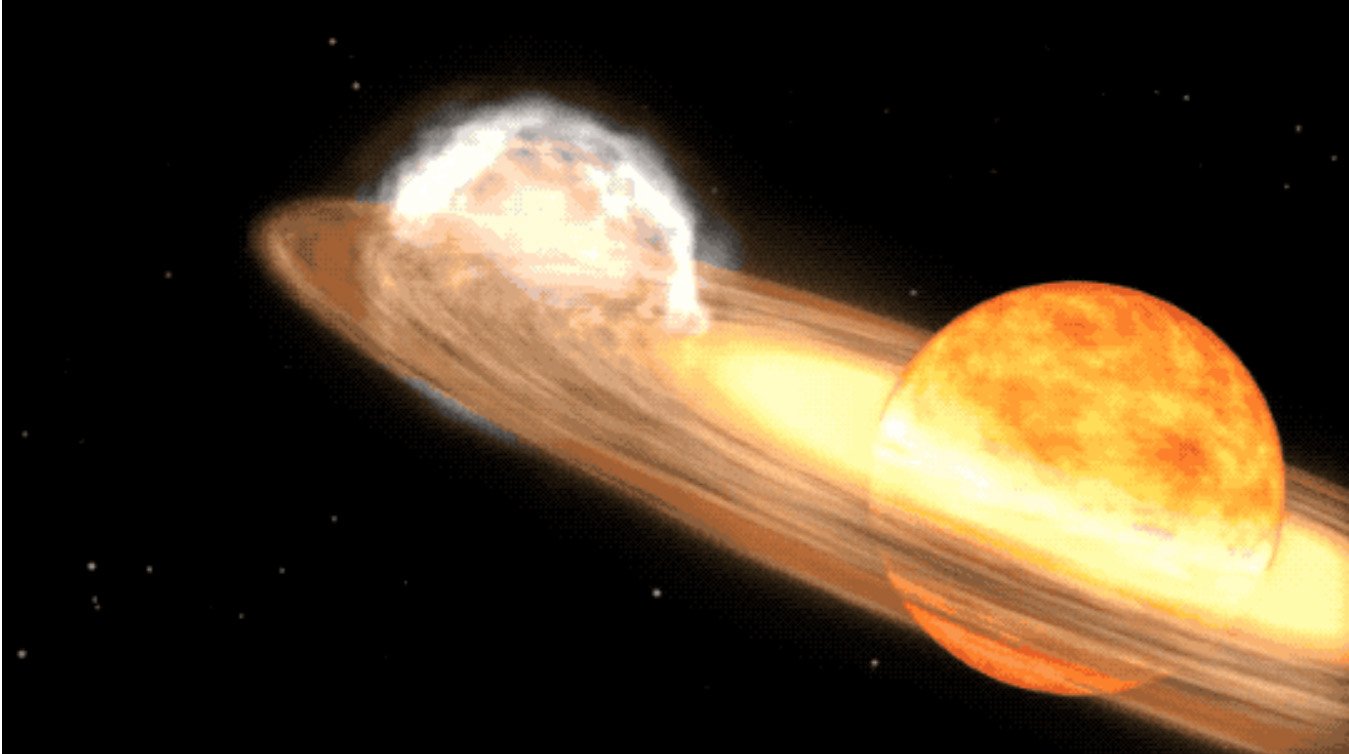Fortunately, the explosion is taking place at a pretty safe distance — about 3000 light years away, in a binary star system called T Coronae Borealis (T CrB).
The red giant and white dwarf sit in the Northern Crown constellation — a small, semicircular arc near Bootes and Hercules — low in our northern skies.
Nasa scientists say the two stars will become visible to the naked eye when they get close to each other.
The red giant becomes unstable from its increasing temperature and pressure and begins ejecting its outer layers, while the white dwarf collects that matter on to its surface.
The shallow dense atmosphere of the white dwarf eventually heats enough to cause a runaway thermonuclear reaction, which produces a nova that we will be able to see from Earth.
Otago Museum director and astronomer Dr Ian Griffin said it would appear as a "new" bright star, and should be visible to the unaided eye in New Zealand for several days, or just over a week with binoculars, before it dims again.
"To astronomers, novas are reasonably common. I’ve seen four with the naked eye in my lifetime.

"Usually, you can’t see it with the naked eye, but it will be quite bright — about the same brightness as the stars in the Orion constellation."
To give an idea of the size of the explosion, Dr Griffin said it would be a planet killer.
"A massive nuclear explosion of this size, if it were to happen to our star, it would certainly destroy all life on Earth and disrupt the nearby planets by pushing them away."
Nasa scientists say the nova outburst occurs about every 80 years. T CrB last exploded in 1946 and astronomers believe it will do so again between February and September 2024.
Dr Griffin said the recurring nova was one of only five in our galaxy.
"It’s hard to predict exactly when it will happen — sometime between February and September. It’s impending."












